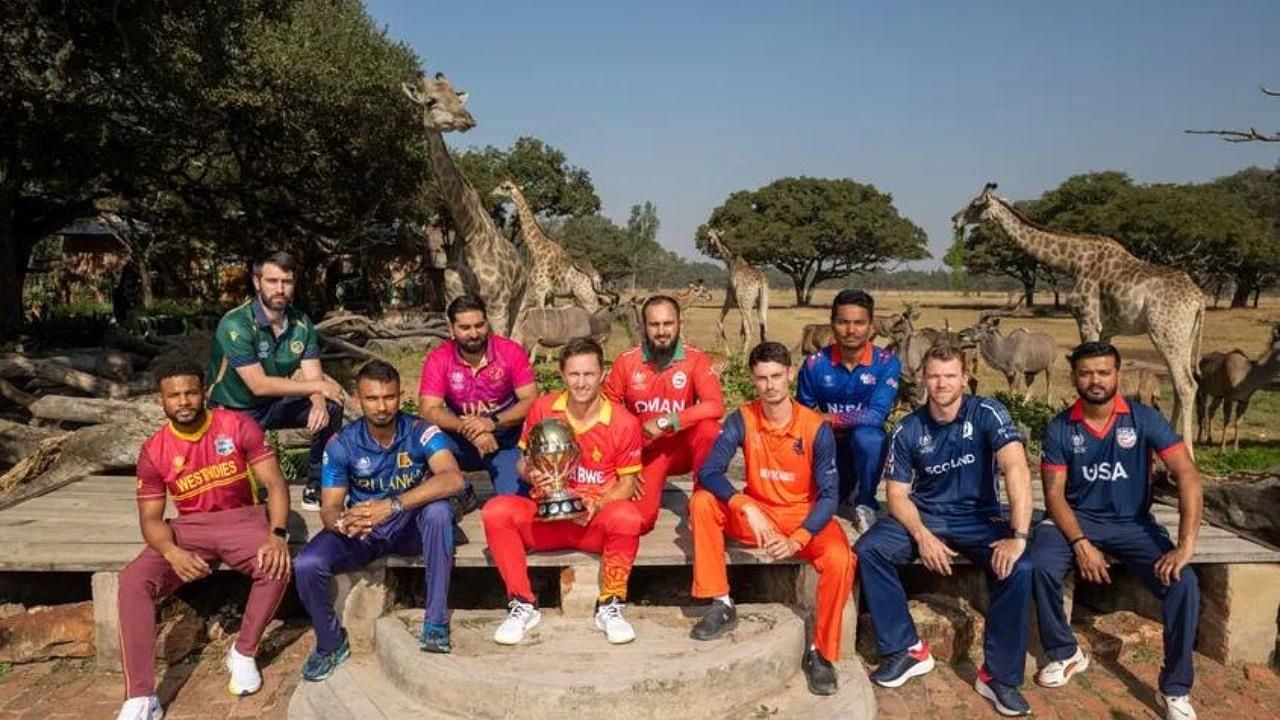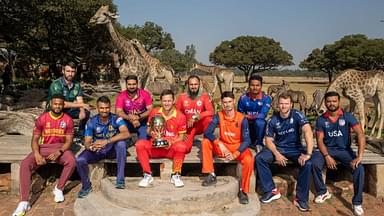The 12th edition of ICC World Cup Qualifier is all set to commence from today onwards in the African nation of Zimbabwe. The group stage fixtures will be followed by the Super Sixes stage, with the grand finale to take place on July 9 in Harare.
Advertisement
The Qualifier begins with a couple of encounters from Group A. Hosts Zimbabwe will take on Nepal first at the Harare Sports Club, while former World Champions West Indies will lock horns against the United States of America later, at the Takashinga Sports Club in Harare.
A total of 10 teams have been split in a group of five each. Former world champion Sri Lanka, Ireland, Scotland, UAE, and Oman are part of Group B, while USA, West Indies, Zimbabwe, Nepal, and Netherlands are placed in Group A.
ICC World Cup Qualifier Format
The five teams from each group will face their fellow group members one time each in what will be a round-robin competition. The teams in Group A will have their matches in Harare, while Group B will be based in Bulawayo.
The top three teams from both the groups will advance towards the Super Sixes stage, while the bottom two placed teams will unfortunately get eliminated from the competition. They will, however, involve themselves in the playoffs contest for the seventh, eighth, and ninth spot.
During the Super Sixes stage, the three teams from a group will face the three qualified teams from other group one time each. It is worth of a mention, that these six teams will also carry the group stage points of their wins against other teams which also progressed towards the Super Sixes stage.
The table-topper and runner-up will ultimately join the eight already qualified teams in a 10-team ICC World Cup, which is scheduled to take place in India later this year.
How Have These 10 Teams Reached World Cup Qualifier?
The five teams which failed to make it to the Top 8 teams in the 2020–23 ICC Men’s Cricket World Cup Super League became part of the World Cup Qualifier automatically. 12 Full Members of the International Cricket Council (ICC) and the Netherlands, who had won the 2015–17 ICC World Cricket League Championship, were part of the first-ever ODI World Cup Super League.
These five bottom-ranked teams were West Indies, Sri Lanka, Ireland, Zimbabwe, and the Netherlands.
The top-three teams in the Cricket World Cup League 2 competition (featuring Associate members ranked 14-20 in World Cup League) were the next to qualify. These teams were Scotland, Oman, and Nepal.
Finally, the two finalists (USA and UAE) from the Qualifier Playoff held in March-April this year made it through to the World Cup Qualifier. The Qualifier playoff featured the bottom four placed teams from the League 2 competition, and the top-two teams from the Challenge League (between Associate Members ranked 21-32 in World Cup League).

